Table of Contents
What is Electrochemical Series?
The standard reduction potentials of a large number of electrodes have been measured using a standard hydrogen electrode as the reference electrode. These various electrodes can be arranged in increasing or decreasing order of their reduction potentials. The arrangement of elements in order of increasing reduction potential value is called electrochemical series.
| Electrode Reaction | Standard Electrode Potential E°298 (in volts) |
|---|---|
| Li+ (aq) + e– ——> Li (s) | -3.05 |
| K+ (aq) + e– ——> K (s) | -2.93 |
| Ba2+ (aq) + 2e– ——> Ba (s) | -2.90 |
| Ca2+ + 2e– ——> Ca (s) | -2.87 |
| Na+ (aq) + e– ——> Na (s) | -2.71 |
| Mg2+ (aq) + 2e– ——> Mg (s) | -2.37 |
| Al3+ (aq) + 3e– ——> Al (s) | -1.66 |
| 2H2O (l) + 2e– ——> H2 (g) + 2OH– (aq) | -0.83 |
| Zn2+ (aq) + 2e– ——> Zn (s) | -0.76 |
| Cr3+ (aq) + 3e– ——> Cr (s) | -0.74 |
| Fe2+ (aq) + 2e– ——> Fe (s) | -0.40 |
| Cd2+ (aq) + 2e– ——> Cd (s) | -0.40 |
| PbSO4 (s) + 2e– ——> Pb (s) + SO42- (aq) | -0.31 |
| Co2+ (aq) + 2e– ——> Co (s) | -0.28 |
| Ni2+ (aq) + 2e– ——> Ni (s) | -0.25 |
| Sn2+ (aq) + 2e– ——> Sn (s) | -0.14 |
| Pb2+ (aq) + 2e– ——> Pb (s) | -0.13 |
| Fe3+ (aq) + 3e– ——> Fe (s) | -0.036 |
| 2H+ (aq) + 2e– ——> H2 (g) (Standard Electrode) | -0.00 |
| Cu2+ (aq) + e– ——> Cu+ (aq) | +0.18 |
| Cu2+ (aq) + 2e– ——> Cu (s) | +0.34 |
| Cu+ (aq) + e– ——> Cu (s) | +0.52 |
| I2 (s) + 2e– ——> 2I– (aq) | +0.54 |
| Fe3+ (aq) + e– ——> Fe2+ (aq) | +0.77 |
| Hg22+ (aq) + 2e– ——> 2Hg (l) | +0.79 |
| Ag+ (aq) + e– ——> Ag (s) | +0.80 |
| Hg2+ (aq) + 2e– ——> 2Hg (l) | +0.85 |
| Br2 (g) + 2e– ——> 2Br– (aq) | +1.08 |
| 1/2O2 (g) + 2H3O+ (aq) + 2e– ——> 3H2O (l) | +1.23 |
| Cl2 (g) + 2e– ——> 2Cl– (aq) | +1.36 |
| Au3+ (aq) + 3e– ——> Au (s) | +1.42 |
| MnO4– (aq) + 8H3O+ (aq) + 5e– ——> Mn2+ (aq) + 12H2O (l) | +1.51 |
| F2 (g) + 2e– ——> 2F– (aq) | +2.87 |
Applications of Electrochemical Series:
Relative Strengths of Oxidizing and Reducing Agents:
With the help of electrochemical series, we can predict the relative oxidizing or reducing strengths of substances. In the electrochemical series, the substances are arranged in the increasing order of reduction potential i.e. increasing tendency for reduction to occur or power as an oxidizing agent. Therefore, the elements at the top of the table have a maximum tendency to get oxidized and consequently, they will act as good reducing agents. On the other hand, the substances at the bottom of the table have higher reduction potential, therefore they have the least tendency to get oxidized. Consequently, they may be reduced and acts as a good oxidizing agent. Thus, the substances which have lower reduction potentials are stronger reducing agents while those which have higher reduction potentials are stronger oxidizing agents.
Calculation of the E.M.F of the Cell:
The e.m.f. of the cell (E°cell) is equal to the difference between the standard electrode potential of the cathode and the standard electrode potential of the anode. Thus,
| E°cell = E° (cathode) – E° (anode) |
The electrode potentials of both the electrodes are taken to be reduction potentials.
If the e.m.f of the cell is positive, the reaction is feasible in the given direction. But if e.m.f. of the cell is negative, the cell reaction is not feasible in the given direction. The reaction must be occurring in the reverse direction. Thus, to get a positive value for the e.m.f. of the cell, the electrodes are reversed.
Predicting Feasibility of the Reaction:
The electrochemical series helps in finding out whether a given redox reaction is feasible or not in the given direction from the E° values of the two electrodes. In general, a redox reaction is feasible only if the species which has a higher reduction potential is reduced i.e. accepts the electrons and the species which has lower reduction potential is oxidized i.e. loses the electron. Otherwise, a redox reaction is not feasible. In other words, the species to release electrons must have lower reduction potential as compared to the species which accept electrons.
The electrochemical series gives the increasing order of electrode potential (reduction) of different electrodes on moving down the table. This means that the species to accept the electrons (getting reduced) must be lower in the electrochemical series as compared to the other which is to lose electrons (getting oxidized).
Let us illustrate this by predicting the feasibility of the reaction-
| Cu2+ (aq) + 2Ag (s) ———> Cu (s) + 2Ag+ (aq) |
From the electrochemical series, E° value of Cu = +0.34 V and the E° value of Ag = +0.80 V. Since the reduction potential of Ag is more than that of Cu, this means that silver has greater tendency to get reduced in comparison to copper. Thus, the reaction-
| Ag+ (aq) + e– ——> Ag (s) occurs more readily than the reaction Cu2+ (aq) + 2e– ——> Cu (s) |
Similarly, since the reduction potential of Cu is less than that of Ag, this means that Cu will be readily oxidized in comparison to Ag. Thus, the reaction Cu (s) ——> Cu2+ (aq) + 2e– occurs more readily than the reaction Ag (s)——> Ag+ (aq) + e–. Therefore, silver will be reduced and copper will be oxidized and the above reaction is not feasible. Rather the reverse reaction, Cu (s) + 2Ag+ (aq) ———-> Cu2+ (aq) + 2Ag (s) can occur.
Predicting the Reactivity of Element:
The electrode potential having a low reduction potential value is found to be more reactive. The electrode potential having a high reduction potential value is found to be less reactive.
To predict whether a Metal Reacts with acid to give Hydrogen Gas or not:
The metal (M) reacts with an acid (H+) to give H2 gas.
| M + H+ ———-> M+ + 1/2H2 |
In general, only those metals can liberate hydrogen from the acid which has negative values of reduction potentials i.e., -E° values. Obviously, hydrogen will have a greater tendency to get reduced (accept electrons) and the metal can lose electrons (get oxidized) and hydrogen gas is liberated. These metals are also called active metals (Zn, Mg).
| M (Monovalent) ———> M+ (aq) + e_ H+ (aq) + e– ——> H or 1/2H2 |
Metals like copper and silver have +E° values i.e., electrons accepting tendencies. Their atoms are not in a position to lose electrons to H+ ions of the acid. Therefore, hydrogen gas is not liberated.
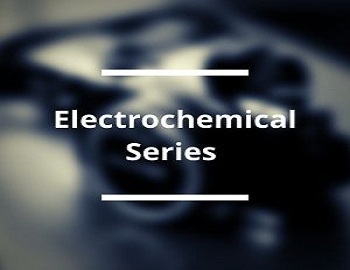
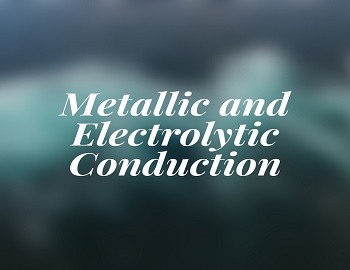


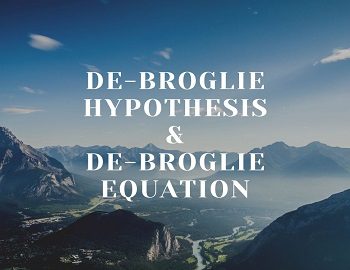


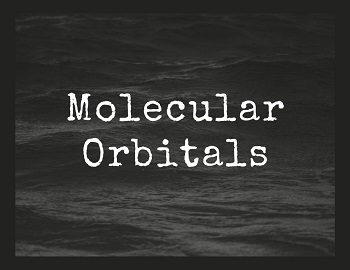
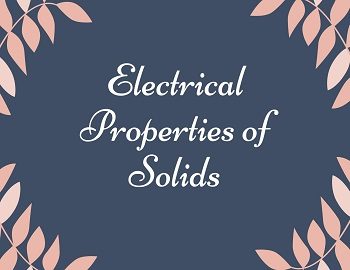
Comments (No)